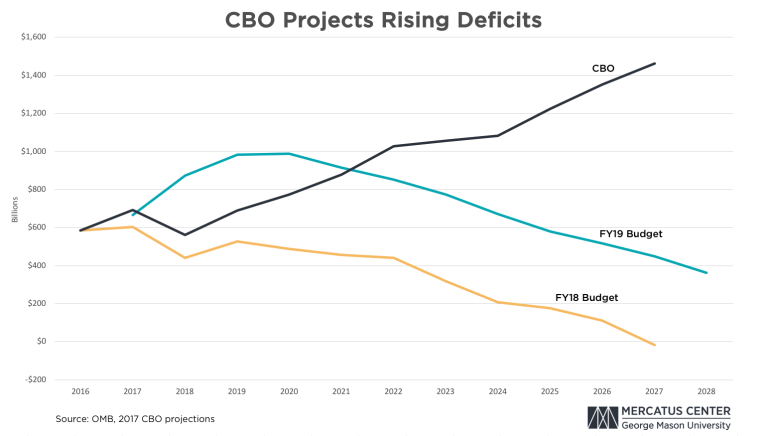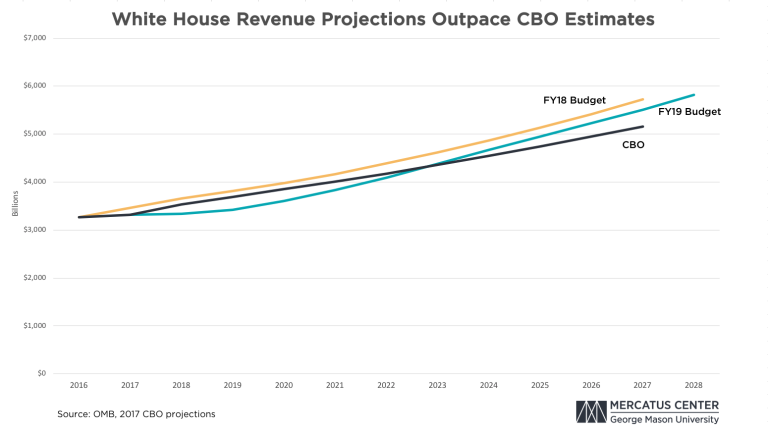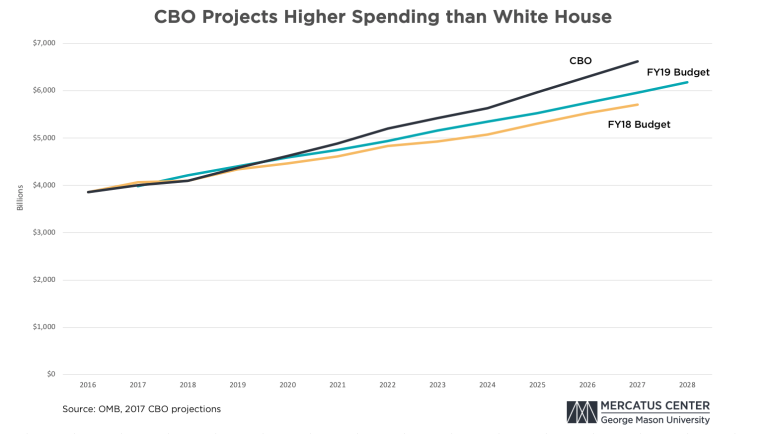- | Government Spending Government Spending
- | Expert Commentary Expert Commentary
- |
Unrealistic Budget Assumptions Drive Deficit Projections
The president’s fiscal year 2019 budget is out. It is incredibly unrealistic and doesn't prepare us for the nasty fiscal reality that all of us will soon face. Now, I should say that every president’s budget is unrealistic. They all project strong and positive growth rates that never materialize. They all promise savings that never see the light of day. They all use budget gimmicks.
But this one is particularly bold coming right after last week’s horrendous budget deal.
The Good: Laying the Groundwork
In the budget director's defense, since all budgets are more a wish list than anything else, I welcome the effort to think through which programs should be terminated. This budget does that and comes up with 22 programs.
There is little to no chance that these programs will be cut, and it means that they are overstating their projected savings, but it is still a useful exercise.
The budget also includes a budget savings document with lots to like. Congress won't like it, but it is necessary. Eventually, Congress will have no choice but to cut spending, and budget savings documents provide a map for how to do so.
The Bad: Unrealistic Assumptions
The economic growth assumptions are unrealistic in the long run. They always are, though the short run could see solid growth as long as the president avoids threatening to withdraw from NAFTA and doesn't significantly reduce immigration.
As for spending cuts touted in the press releases, they don't mean that the government will be spending less money than the year before. In the best case scenario, they may slow down the growth of spending. In FY2019 the plan is to spend $4.4 trillion, which will grow into $6.1 trillion in FY2028. That's a $1.7 trillion increase in spending.
This budget also assumes nondefense spending will be cut by 40 percent. This is not happening, especially after Congress just passed last week’s budget deal that jacks up defense spending alongside a ten percent increase in nondefense spending.
It is also unrealistic to expect large nondefense cuts when this budget adds roughly $800 billion in new defense spending.
This budget also makes some of the expiring provisions in the tax reform plan passed last December permanent.
The Real Problem: The Deficit
Strong and overly optimistic economic growth projections result in fairly high tax receipts projections. If you add bogus spending cuts and unrealistic tax receipt projections, you end up with unrealistic deficit projections.
The budget projects that the deficit hits $916 billion in 2021 and starts falling after that. It is projected to be down to $363 billion in FY2028. That would, in turn, allow for lower growth in interest payments, and a reduction in the public debt from 80 percent of GDP in FY2019 to 72.6 percent of GDP in FY2028. Gross debt would drop from 108.1 percent of GDP to 91.8 percent of GDP.
While that would be nice, we know what successful fiscal adjustment packages look like, and this is not it.
Even using these unrealistic assumptions, without a financial crisis and with a growing economy, the Trump administration may produce larger deficits than some of the Obama years. That should give people pause.
Here are some key numbers which will rapidly be updated upward:
$7 trillion in cumulative deficits over ten years

$45.5 trillion revenue collected over ten years

$52.6 trillion in spending over ten years
